第17章 REAL INCOME: COST AND UTILITY(3)
§4.If we are to estimate the human value of a given national income, it is evident that we must secure answers to three questions.We must first learn what the concrete goods and services are which constitute the 'real' income, and then we must trace these concrete goods and services backwards through the processes of their production and forward through the processes of their consumption, in order to learn the human costs and utilities which attach to each.The amount of human wealth or 'illth' which each of these concrete 'goods' contains has, strictly speaking, no assignable relation to the money ticket put upon it when it is sold.That sum of human value can only be worked out in terms of the actual processes of production and consumption through which the 'goods' pass.Some students of current political economy may perhaps be disposed to cavil at this criticism, insisting that on the average things must be sold in proportion to the painful or otherwise distasteful efforts of producing them, or in proportion to the pleasant or otherwise serviceable modes of their consumption.On the average, they will contend, a rational calculus of pleasure and pain underlies the operations of the economic system.This position, however, I claim to undermine by showing, first that this 'rational' calculus rests upon assumptions of free choice and competition which are unwarrantable, and secondly, that this rational calculus of current pleasures and pains, so far as it is operative, is not a valid criterion of human welfare as conceived in the terms of organic welfare.Our task, it must be realised, is not that of reducing monetary values, or the concrete goods to which they refer, to terms of average current desirability, but to terms of that desirability corrected so as to conform to the best-approved standard of the desirable.
In a word, the defects of average current estimates and desires, in part causes, in part effects of a defective industrial economy, must themselves be valued and discounted in terms of our human ideals of individual and social life.
§5.With this organic standard, the nature and validity of which will become clearer with use, let us set about our task of finding methods for assessing in terms of human value the stocks of concrete goods and services which are the real net income of the nation.The human, as distinguished from the money and the 'real' dividend, will consist of the amount of vital or organic welfare conveyed in the producing and consuming processes for which this concrete income stands.What we require then is to apply some sort of calculus of human cost and human utility to these processes.Now we are confronted at the outset by the position of an economic science which conceives production entirely in terms of 'cost', consumption entirely in terms of 'utility'.Indeed, the economic doctrine of value hinges almost entirely upon this antithesis.For it is mainly owing to its 'costs' that a limit of scarcity is set on each 'supply,' while it is the 'utility'
accorded by consumers that gives economic force and meaning to 'demand'.
Hence production is conceived as a process which rolls up costs into commodities, consumption as a process that unrolls them into utilities.
Now an organic interpretation of industry cannot accept this mode of conceiving the productive and consumptive functions.Considerations of the organic origins of industry lend no support to the assumption that production is all 'cost' and no 'utility,' consumption all 'utility' and no 'cost'.On the contrary, in our human analysis of economic processes we shall rather expect to find costs and utilities, alike in their sense of pains and pleasures and of organic losses and organic gains, commingled in various degrees in all productive and consumptive processes.
Our aim will be to set out, as well as we can, reliable rules for examining the productive and consumptive history of the various sorts of concrete marketable goods so as to discover the human elements of cost and utility contained in each, and by a computation of these positives and negatives to reach some estimate of the aggregate human value contained in the several sorts of commodities which form the concrete income of the nation and in this income as a whole.Only by some such process is it possible to reach a knowledge of the real wealth of nations.
We may state the problem provisionally in three questions:
1.What are the concrete goods and services which constitute the real national income?
2.How are these goods produced?
3.How are they consumed?